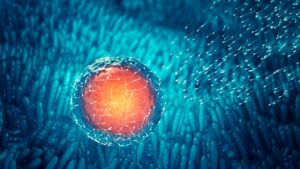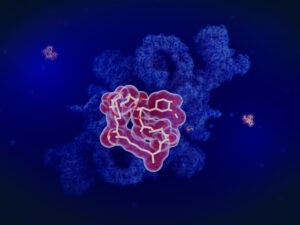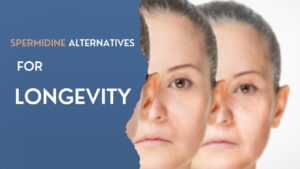Abstract
Recent research highlights the importance of synergy in enhancing treatments by targeting multiple biological pathways at the same time. Previous studies have shown that Dendrobium officinale polysaccharide (DOP) can potentially extend the lifespan of Caenorhabditis elegans (C. elegans) through modulation of gut microbiota. Meanwhile, spermidine (Spd), a caloric restriction mimetic, promotes autophagy and exerts significant anti-aging effects. To enhance the anti-aging capability of DOP, a comprehensive study was conducted on the combined impact of DOP and Spd in C. elegans, along with metabolomic analysis to explore potential mechanisms. The combination of 250 mg/L DOP and 29.0 mg/L Spd produced the most favorable results regarding lifespan extension, demonstrating synergistic effects with a combination index (CI) of 0.65. In oxidative and thermal stress tolerance assays, the observed CI values were 0.50 and 0.33, respectively. The metabolomic analysis highlighted significant changes in metabolites associated with lipid, nucleotide, and energy metabolism, particularly the regulation of glycerol-3-phosphate, linoleoylglycerol, eicosapentaenoic acid, and β-nicotinamide mononucleotide (NMN), and nicotinamide adenine dinucleotide (NAD+). The effects of the DOP-Spd combination (DS) on lipid metabolism were further verified by oil red O staining and triglyceride levels in C. elegans. Results indicated that DS might achieve its effects primarily by modulating lipid metabolism. These findings were further validated using a high-fat diet (HFD)-induced mouse model, suggesting that the synergistic anti-aging effect of DOP and Spd may primarily be achieved through altering lipid metabolism processes.
Introduction to Dendrobium Officinale Polysaccharide and Spermidine
Dendrobium Officinale Polysaccharide (DOP)
Dendrobium officinale is a traditional medicinal herb highly valued for its health-promoting properties, particularly in East Asia. DOP, a polysaccharide extracted from this herb, has been studied for its antioxidant, immune-enhancing, and anti-aging properties. The chemical structure of DOP includes a high content of mannose and glucose, which are believed to contribute to its biological activities by enhancing immune responses, promoting antioxidant effects, and supporting gut microbiota balance. Mannose plays a key role in cell-to-cell communication and immune modulation. At the same time, glucose is an essential energy source, aiding in various metabolic processes that support the overall health benefits of DOP. It is water-soluble, with a molecular weight that varies depending on the extraction method.
DOP is naturally found in the stem of Dendrobium officinale, a valuable member of the Orchidaceae family. Its benefits include boosting immune function, reducing oxidative stress, and promoting gut health. Previous research has suggested that DOP can modulate the gut microbiota and promote the growth of beneficial bacteria, potentially aiding in regulating metabolic processes associated with aging.
For more information on spermidine supplements and their benefits, visit Spermidine Pure.
Spermidine (Spd)
Spermidine is a naturally occurring polyamine found in a variety of foods, including aged cheese, soy products, mushrooms, wheat germ, and legumes. As a caloric restriction mimetic, Spd promotes autophagy, a cellular process that removes damaged components, thus contributing to enhanced cellular health and longevity. For a comprehensive list of spermidine-rich foods, check out Spermidine Foods List.
Chemical and Physical Features of Spermidine
Chemically, spermidine is a polyamine composed of three amine groups connected by aliphatic chains. It is hydrophilic, with a low molecular weight, facilitating its absorption and distribution within cells. Its role in stabilizing DNA and RNA, promoting protein synthesis, and regulating cellular growth makes it a crucial molecule for maintaining cellular integrity and function.
Spermidine’s health benefits include its ability to induce autophagy, a mechanism associated with reduced inflammation, improved metabolic function, and extended lifespan. Studies have shown that spermidine’s effect on autophagy can improve cardiovascular health, enhance neuroprotection, and reduce age-related diseases, making it a compelling candidate for anti-aging interventions. For more detailed information on spermidine’s role in autophagy and its health benefits, explore Spermidine Anti-Aging.
Effect of Spd on Food Clearance Rate in C. elegans
Food intake significantly affects the lifespan of nematodes; for example, dietary restriction has been shown to extend lifespan in various animal models. Thus, it was necessary to evaluate food clearance before conducting lifespan assays to determine the appropriate concentration range for Spd administration. Synchronized C. elegans were cultured at 20°C until the L4 larval stage, followed by food clearance assays using a 96-well plate. The optical density of Escherichia coli OP50 served as an indicator of worm food concentration.
At Spd concentrations of 116.0 and 232.0 mg/L, food clearance slowed after 12 hours (p < 0.05). The 96-hour consumption rate at lower concentrations matched the control group (p > 0.05). Therefore, Spd concentrations of 14.5, 29.0, and 58.0 mg/L were used for further lifespan analysis.
Synergistic Anti-Aging Effects of DOP and Spd in C. elegans
Lifespan Extension and Stress Resistance
The effect of Spd on the lifespan of nematodes was investigated. Compared with the control group, the survival curve of the 14.5 mg/L Spd group showed a marginal shift to the right, although this change did not reach statistical significance (p > 0.05). In contrast, treatments with 29.0 and 58.0 mg/L Spd led to a significant rightward shift in the survival curve compared with the control group (p < 0.05), with no significant difference between the two concentrations.
In synergy experiments, DOP and Spd were combined to determine their synergistic effects on aging and stress resistance. The combination of 250 mg/L DOP and 29.0 mg/L Spd produced the most favorable outcomes in lifespan extension (CI = 0.65), highlighting a moderate synergistic effect, where the combined treatment was more effective than either compound alone. Additionally, oxidative and thermal stress tolerance was significantly improved in the DS-HH group, with CI values of 0.50 and 0.33, respectively. These results suggest that the combination enhances the resilience of C. elegans to environmental stressors while promoting longevity.
For a deeper dive into the synergistic effects of spermidine in combination with other compounds, see Combination of Spermidine and Lifespan.
Metabolomic Analysis and Lipid Metabolism
The metabolomic analysis highlighted significant metabolite changes associated with lipid, nucleotide, and energy metabolism in the DS-HH group. These changes suggest improved metabolic efficiency and resilience, contributing to the observed anti-aging effects. In particular, the regulation of glycerol-3-phosphate, lin oleoyl glycerol, NMN, NAD+, and citric acid indicated that the combined treatment significantly affects lipid metabolism. Oil red O staining further demonstrated reduced lipid accumulation in C. elegans treated with the DS combination, supported by a significant reduction in triglyceride levels.
The findings suggest that DOP and Spd exert their anti-aging effects primarily through modulating lipid metabolism, enhancing lipid utilization, and reducing lipid synthesis. The upregulation of autophagy-related genes (such as sir-2.1 and daf-16) and enhanced antioxidant enzyme activity (SOD and CAT) further support the role of lipid metabolism regulation in extending lifespan and improving stress resistance.
To learn more about the role of polyamines like spermidine in health and aging, check out Polyamines and Aging.
Validation of Synergistic Effects in HFD-Induced Mouse Model
A high-fat diet-induced mouse model further validated the synergistic effects observed in C. elegans. The combination of DOP and Spd significantly reduced body weight gain compared to the HFD control group, with glucose levels decreasing by 15%, triglycerides by 20%, and LDL cholesterol by 18%. These improvements in blood biochemical markers indicate enhanced metabolic health and reduced risk factors associated with aging. The DS combination outperformed individual treatments in these metrics, suggesting its potential to improve metabolic health and counteract aging-associated metabolic impairments.
For more details on spermidine’s impact on obesity and weight management, see Spermidine for Weight Loss.
Conclusion
The combination of 250 mg/L DOP and 29.0 mg/L Spd demonstrated a synergistic anti-aging effect, as indicated by a combination index (CI) of 0.65 in lifespan extension assays in C. elegans. A CI value below 1 indicates synergy, meaning that the combined effect of DOP and Spd exceeds the sum of their individual effects. Metabolomic analysis revealed that the combination primarily modulates lipid metabolism, significantly altering key metabolites involved in lipid, nucleotide, and energy metabolism. These findings were validated in a high-fat diet-induced mouse model, highlighting the potential of DOP and Spd as promising anti-aging interventions. Developing cost-effective anti-aging supplements combining these compounds could be a novel approach to promoting longevity and metabolic health, though further validation through human clinical trials is needed.
For more information on our products or to contact us, please visit Spermidine Pure.
Reference:
- Duan, H., Yu, Q., Ni, Y., Li, J., Yu, L., Yan, X., & Fan, L. (2024). Synergistic anti-aging effect of Dendrobium officinale polysaccharide and spermidine: A metabolomics analysis focusing on the regulation of lipid, nucleotide and energy metabolism. In International Journal of Biological Macromolecules (Vol. 278, p. 135098). Elsevier BV. https://doi.org/10.1016/j.ijbiomac.2024.135098
- Download the reference here



